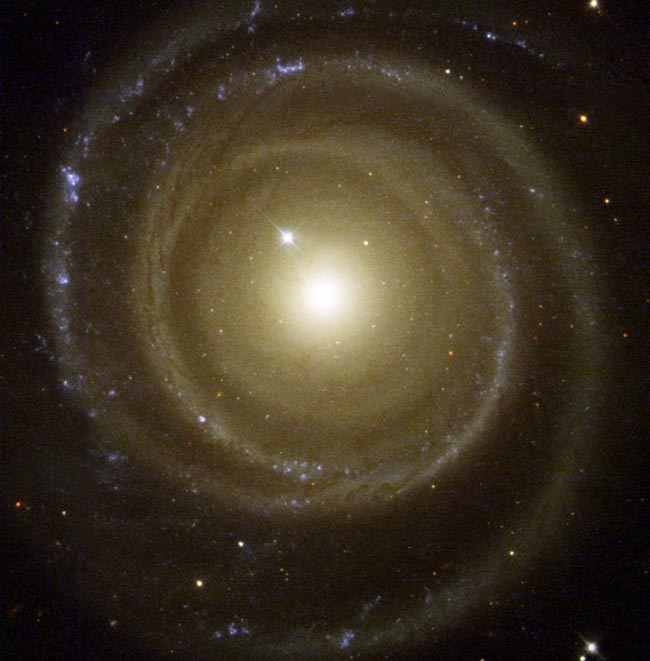Spiral Galaxy Winds Backwards

Newdiscoveries in a strange spiral galaxy show it has a pair of arms winding backwardcompared to the typical direction for most galaxies.
?While theexistence of a galaxy with a pair of ?backward? arms may seem like aninconvenient truth to many, our latest analysis indicates it is, nonetheless, areality,? said Gene Byrd, a University of Alabama astronomer.
Most spiralarms observed so far tend to trail in the wake of their galaxy's spin,meaning they wind in the direction opposite the rotation. The strange galaxy,known as NGC4622, lies 200 million light years away and has a large outer armpair that winds clockwise.
Byrd andhis colleagues analyzed a 2001 Hubble Space Telescope image of the galaxy andfound a previously hidden inner pair of arms winding counter-clockwise.Whichever way the galaxy happens to rotate, one pair of arms ends up turning inthe unusual direction.
?Contraryto conventional wisdom, with both an inner counter-clockwise pair and an outerclockwise pair of spiral arms, NGC4622 must have a pair of leading arms,? Byrdsaid. ?With two pairs of arms winding in opposite directions, one pair mustlead and one pair must trail."
The teamalso found a single outer clockwise arm and a single inner counterclockwise arm,which again points to the galaxy's strange characteristic.
Byrd andhis colleagues first published the idea about the backward arms in 2002, butmet with skepticism from astronomers who thought that the galaxy's slight tiltand clumpy dust clouds could be misleading.
Get the Space.com Newsletter
Breaking space news, the latest updates on rocket launches, skywatching events and more!
This timethe team used a new Fourier component method that takes advantage of the tiltto analyze the galaxy and ignores the effects of dust.
The morecomplicated analysis of the image revealed that the strong outer clockwise pairof arms winds in the same direction as the galaxy's spin, making it the unusualleading arm pair. The full results appear in the January issue of AstronomicalJournal.
Questionsstill remain about what led to the galaxy's strange behavior. The Hubble imagerevealed a dark dust lane in the galaxy center, suggesting NGC4622 may have devoureda smaller galaxy.
- VIDEO: When Galaxies Collide
- VIDEO: Our Corner of the Cosmos
- VOTE NOW: Most Amazing Galactic Images Ever
Join our Space Forums to keep talking space on the latest missions, night sky and more! And if you have a news tip, correction or comment, let us know at: community@space.com.
Jeremy Hsu is science writer based in New York City whose work has appeared in Scientific American, Discovery Magazine, Backchannel, Wired.com and IEEE Spectrum, among others. He joined the Space.com and Live Science teams in 2010 as a Senior Writer and is currently the Editor-in-Chief of Indicate Media. Jeremy studied history and sociology of science at the University of Pennsylvania, and earned a master's degree in journalism from the NYU Science, Health and Environmental Reporting Program. You can find Jeremy's latest project on Twitter.









